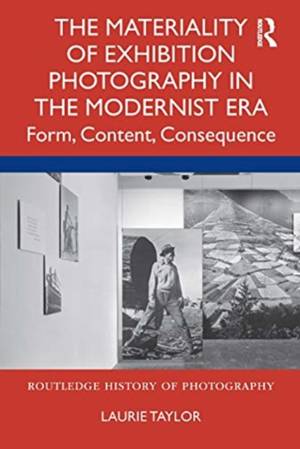
- Retrait gratuit dans votre magasin Club
- 7.000.000 titres dans notre catalogue
- Payer en toute sécurité
- Toujours un magasin près de chez vous
- Retrait gratuit dans votre magasin Club
- 7.000.0000 titres dans notre catalogue
- Payer en toute sécurité
- Toujours un magasin près de chez vous
The Materiality of Exhibition Photography in the Modernist Era
Form, Content, Consequence
Laurie TaylorDescription
This book challenges the status quo of the materiality of exhibited photographs, by considering examples from the early to mid-twentieth century, when photography's place in the museum was not only continually questioned but also continually redefined.
By taking this historical approach, Laurie Taylor demonstrates the ways in which materiality (as opposed to image) was used to privilege the exhibited photograph as either an artwork or as non-art information. Consequently, the exhibited photograph is revealed, like its vernacular cousins, to be a social object whose material form, far from being supplemental, is instead integral and essential to the generation of meaning.
The book will be of interest to scholars working in art history, history of photography, theory of photography, curatorial studies and museum studies.
Spécifications
Parties prenantes
- Auteur(s) :
- Editeur:
Contenu
- Nombre de pages :
- 140
- Langue:
- Anglais
- Collection :
Caractéristiques
- EAN:
- 9780367427696
- Date de parution :
- 31-12-20
- Format:
- Livre relié
- Format numérique:
- Genaaid
- Dimensions :
- 175 mm x 246 mm
- Poids :
- 557 g

Les avis
Nous publions uniquement les avis qui respectent les conditions requises. Consultez nos conditions pour les avis.






